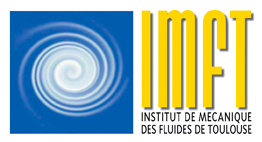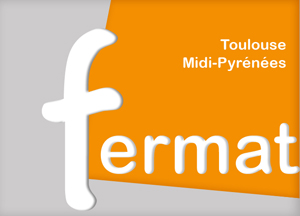Étude numérique du transfert de matière à travers l’interface d’une goutte sphérique en mouvement : mise en évidence des effets 3D
Soutenance de thèse Azeddine Rachih
Mardi 9 avril à 10 h 00 – Amphithéâtre Nougaro
The study of mass transfer in dispersed two-phase flows is a major key step toward the development and optimization of extraction solvent processes. The description of these processes is generally intricate due to the multiphase and multi-scale flow nature. In addition, a description of the process at the scale of isolated drop is an elementary step toward a good understanding of systems involving droplet swarms (with different shapes). This work is devoted primarily to the study, by mean of DNS, of the hydrodynamics and conjugate mass transfer through the interface of a spherical droplet set in a uniform flow of another immiscible phase. The Navier-Stokes equations and the concentration transport equations are solved in orthogonal curvilinear coordinates using a finite volume method. A specific boundary condition is implemented in order to accurately represent the convection/diffusion and mass transfer coupling at the interface.
Considering the internal and external phenomena, we focus in this study on the solute transfer through the interface, from the drop to the continuous phase. A parametric study is performed, covering a large range of operational conditions on viscosity ratio, density ratio, diffusivity ratio and solute distribution coefficient.
The results show a strong dependence of the flow structure on the Reynolds number and viscosity ratio. The analysis of the Sherwood number reveals a significant impact of physical properties (distibution coefficient, diffusivity ratio) on both, its temporal evolution and its steady value. The studied configurations allows to relate the global Sherwood number to the ones that represent internal and external problems. The numerical simulations show that the axisymmetric assumption of the velocity field valid at moderate internal/external Reynolds number (Re – 100), is no longer correct beyond Re = 300. Simulations reveal three-dimensional internal bifurcations of the velocity field that impact significantly the concentration spatial distribution and thus the physics of the transfer
Composition du jury
- M. Eric CLIMENT (Institut de Mécanique des Fluides de Toulouse) – Directeur de thèse
- Mme Sophie CHARTON (CEA Marcoule) – Co-directeur de thèse
- M. Dominique LEGENDRE (Institut de Mécanique des Fluides de Toulouse) – Co-Encadrant
- M. Emmanuel BELUT (INRS Institut National de Recherche et de Sécurité) – Examinateur
- M. Huai-Zhi LI (ENSIC / LRGP, Université de Lorraine) – Examinateur
- M. Kosuke HAYASHI (Université de Kobe, Japon) – Rapporteur
- M. Benoit HAUT (Ecole polytechnique de Bruxelles) – Rapporteur Mme Stéphanie MARTIN (CEA) – Examinateur





